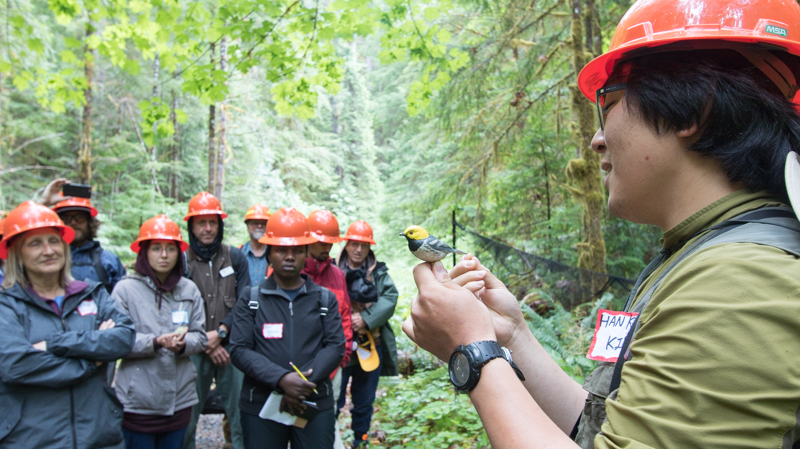
Hankyu Kim studies birds, microclimate, and forest vegetation as a part of ongoing long-term ecological research on songbird populations at the Andrews Forest. Using long-term data, Hankyu is testing if forest microclimate can predict breeding bird population dynamics, and how the interaction of forest composition and structure regulate bird population trends. Hankyu also is studying the migration ecology of Hermit Warblers, a bird that needs mature coniferous forests for breeding. To track the birds’ movements, Hankyu put data loggers on the backs of Hermit Warblers captured on their breeding grounds at the Andrews Forest and across Pacific Northwest. Preliminary data suggests that the birds from the Andrews Forest migrate to areas of Mexico around the Yucatan Peninsula. Finally, Hankyu has studied terrestrial breeding bird population change in South Korea, linking their population dynamics with large-scale land-use change and climate change in the past two decades. Hankyu is a PhD student in OSU’s Department of Forest Ecosystems and Society, working with Matt Betts and Brenda McComb.

